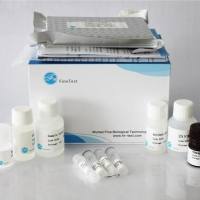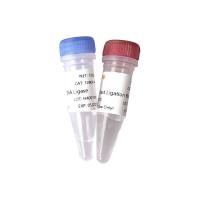Ligation-mediated polymerase chain reaction (LM-PCR) is used for high-resolution genomic footprinting. This technique was originally developed to study in vivo protein-deoxyribonucleic acid (DNA) interactions at regions of genes important for transcriptional regulation. Successful analysis of in vivo occupancy of gene regulatory elements by LM-PCR largely depends on the strategy and quality of reagents. The experimental outline for LM-PCR reaction is shown in Fig. 1 . For a through understanding of this procedure and other alternative options,
see Ausubel et al. (
1 ).
Fig. 1. Experimental outline for LM-PCR. The major steps involved in LM-PCR are schematically outlined. The cleaved genomic DNA is subjected to single-sided PCR, with a gene specific primer followed by ligation to a common linker. The ligated DNA is again subjected to a single sided PCR, with a second gene specific primer using processive polymerase such as Vent DNA polymerase. The last extension is conducted with an end labeled gene specific primer. The end-labeled extension products are visualized on a sequencing gel. Adapted from ref. 2 .






